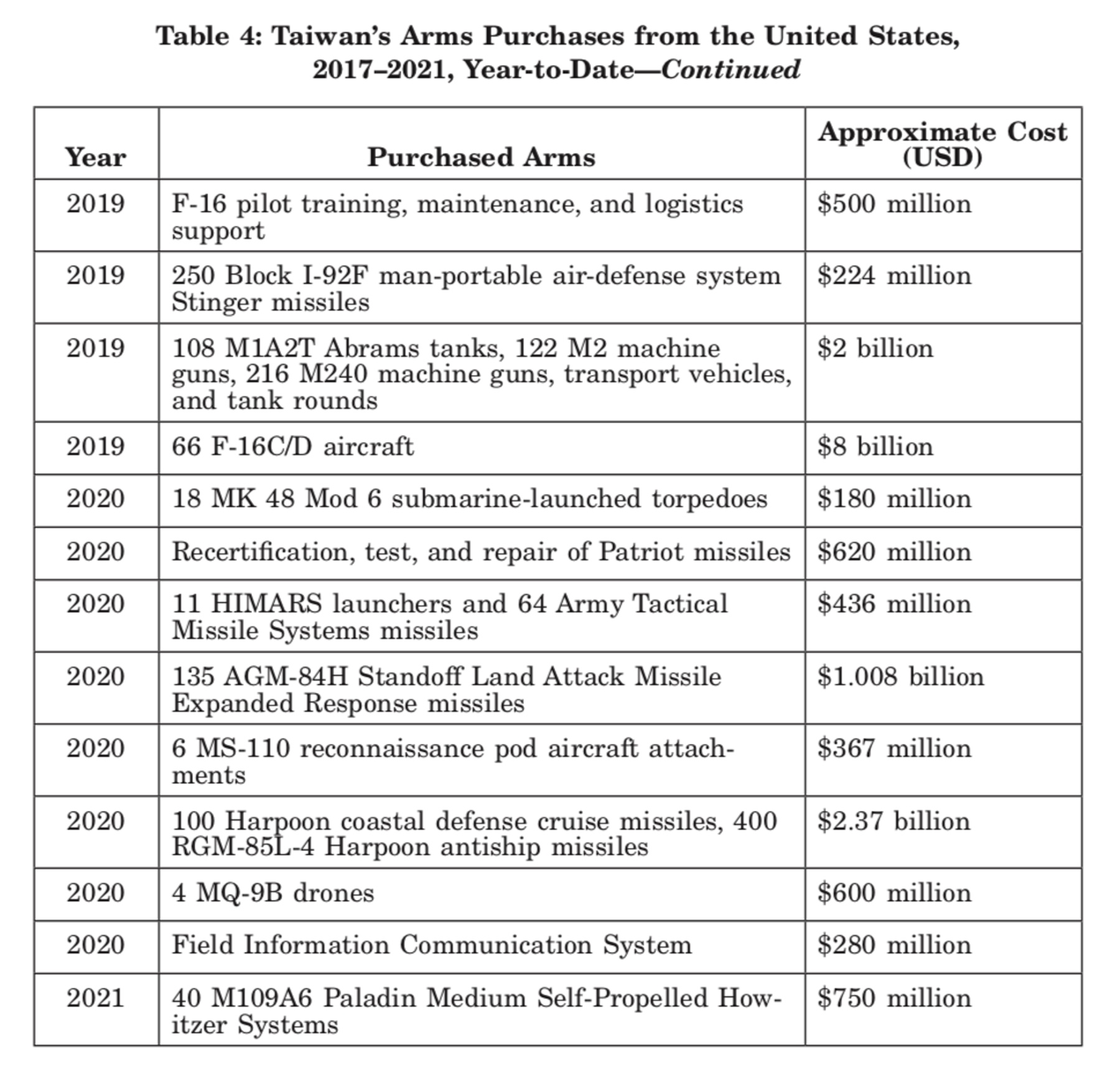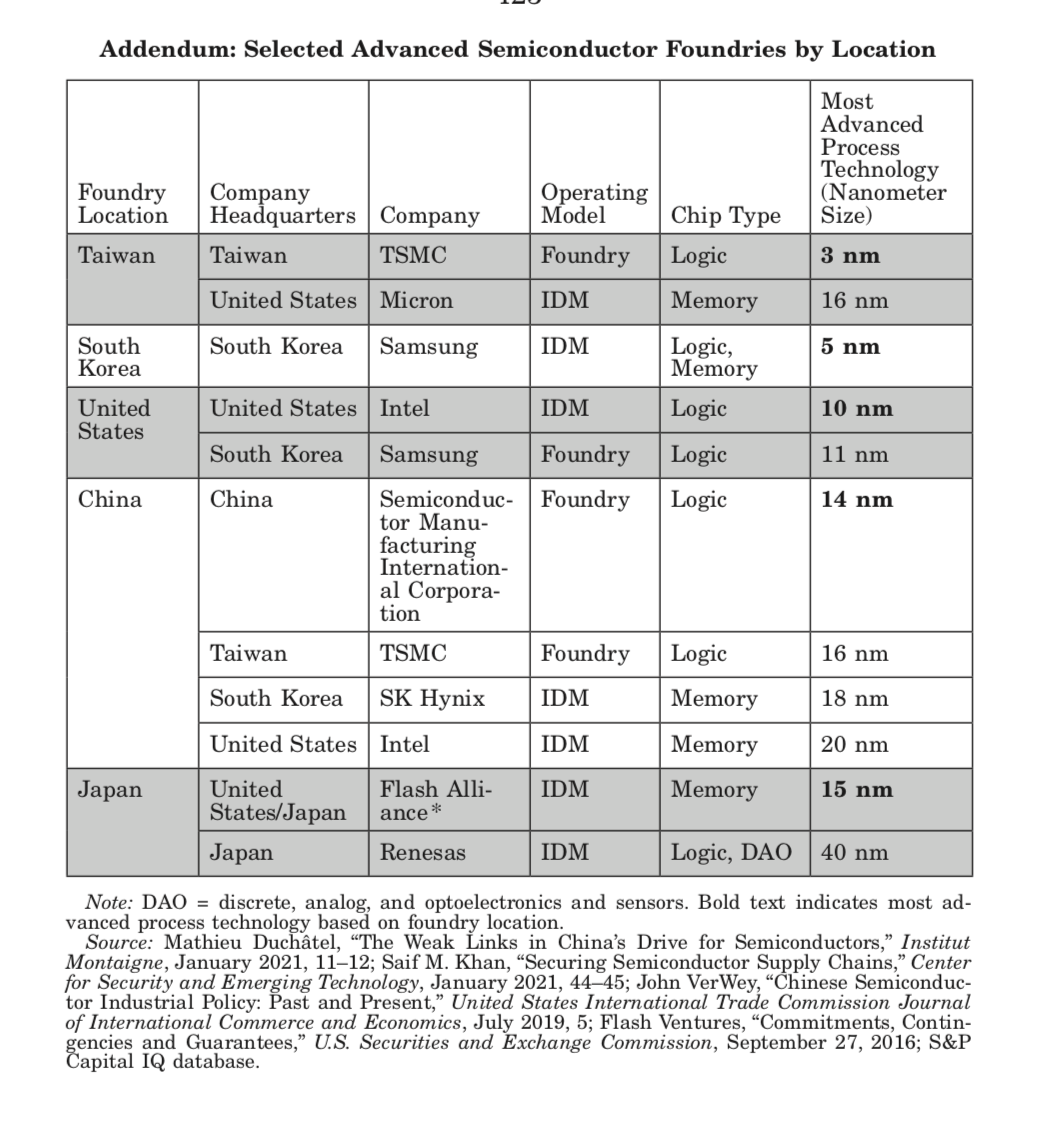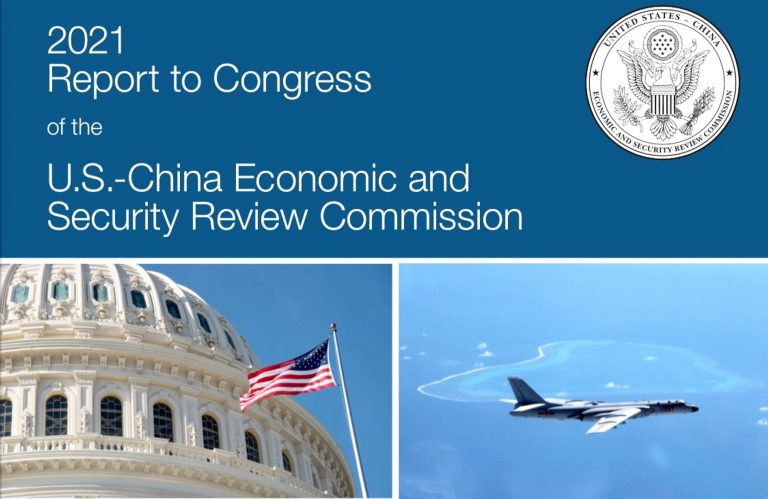On Nov. 17, The U.S.-China Economic and Security Review Commission released its 2021 Annual Report to Congress. The USCC report (www.USCC.gov)recommends Congress take urgent measures to resist any force that would jeopardize the security of Taiwan.
Urgent measures recommended
The urgent measures recommended in the report include “Authorizing and funding the deployment of large numbers of antiship cruise and ballistic missiles in the Indo-Pacific [and] authorizing and funding the requests of U.S. Indo-Pacific Command (INDOPACOM) for better and more survivable intelligence, surveillance, and reconnaissance in the East and South China Seas. ”
“Authorizing and funding the requests of INDOPACOM for hardening U.S. bases in the region, including robust missile defense; Authorizing and funding the stockpiling of large numbers of precision munitions in the Indo-Pacific,” were also included in the recommendations.
The USCC report also suggested how to enhance Taiwan’s defense abilities by “authorizing and appropriating on a multiyear basis Foreign Military Financing Program funds for Taiwan to purchase defense articles from the United States and allowing Taiwan to use Foreign Military Financing funds to purchase arms through direct commercial contracts.”
Further recommendations include “Amending the Foreign Assistance Act to make Taiwan eligible to receive priority delivery of U.S. excess defense articles, and directing the Administration to use the Special Defense Acquisition Fund to reduce defense procurement lead times for arms sales to Taiwan by pre-stocking defense articles needed to maintain cross-Strait deterrence. ”
Success
You are now signed up for our newsletter
Success
Check your email to complete sign up
According to The USCC report, the CCP’s current military sea and airlift capacity could carry an initial landing force of 25,000 or more troops. China has developed substantial capabilities to use civilian ships in military operations, providing capacity for the CCP’s military force to land additional troops on Taiwan after securing a beachhead.
The CCP’s military weakness undermines Beijing’s confidence in invasion
According to the USCC report, while the Chinese Communist Party (CCP) has worked to continually modernize and train its forces, the People’s Liberation Army (PLA) keeps suffering from perennial weaknesses, including poor officer quality, a lack of warfighting experience, and what U.S. analysts consider a critical lack of amphibious lift for a direct beach assault of Taiwan.
The report observed that CCP leaders are aware of its persistent weaknesses in the PLA’s operational effectiveness and harbor significant concerns about its invasion capability.
Moreover, The PLA has yet to train commanders and staff able to plan, coordinate, and conduct the joint operations necessary to invade Taiwan.
For an invasion to succeed, commanders leading PLA forces responsible for air control, sea control, and amphibious assault must be able to achieve their operational objectives and secure access for follow-on forces while facing communications disruptions and incoming fire, according to the USCC report.
As stated in the report, “These operations require a highly adaptable force led by commanders able to make battlefield decisions, yet it is precisely these qualities Chinese leaders have repeatedly found to be lacking in the PLA.”
The report describes a chronic reluctance toward improvements in which “many leaders went through the motions of reform without internalizing it; their uniforms have changed, but their mindsets have not, and their ideas cannot keep up with the needs of a strong military.”
“The decade-long persistence of these weaknesses suggests the PLA faces continued challenges in training the force needed to assure a successful invasion,” the report reads.
According to Mark Cozad, a RAND Corporation senior international defense researcher, the PLA’s plans for war require joint capabilities, however, the PLA’s weaknesses in coordinating between its units undermine the PLA Air Force’s ability to provide ground forces with close air support, which would be vital in an amphibious assault on Taiwan.
The PLA’s shortcomings extend to industrial and logistical system failures that could compromise the deployment or sustainment of China’s invasion force.
According to Mr. Cozad, the PLA’s support capabilities, such as its defense industrial base and the logistical sustainment necessary to maintain a large urban warfare operation, remain lacking. Ongoing technological challenges in China’s defense industrial base make the PLA wholly dependent on Russian imports for the military high-bypass turbofan engines used in its strategic transport aircraft.
Taiwan’s defense
According to the USCC report, Taiwan has taken important steps toward asymmetrically defending against a CCP military attack, achieving successes in developing indigenous missiles that threaten an invasion or blockade.
Since 2017, Taiwan’s government has taken steps to adopt an asymmetric defense strategy such as the one outlined in the Overall Defense Concept (ODC).

Invasion risks derailing China’s competitiveness in electronics manufacturing
China is the top importer of Taiwan semiconductors, with Taiwan accounting for 35.3 percent ($124.1 billion) of China’s total semiconductor imports in 2020, which exceeded $350 billion.
According to the USCC report, A Chinese invasion of Taiwan would likely halt production of semiconductors at Taiwan’s foundries, putting cross-Strait production networks and trillions of dollars in mainland electronics manufacturing assets and revenues at risk.
Additionally, U.S. allies and partners that serve as chief suppliers to Taiwan’s semiconductor industry could impose sanctions and embargoes following a Chinese invasion of the island.

The US could mobilize a broad coalition to oppose CCP global ambitions
The USCC report stated that the United States’ ability to marshal a coalition of countries opposed to the further expansion of China’s international power and influence could also deter Chinese leaders from invading Taiwan.
In 2021, U.S. allies and partners took steps that increased their presence in the Indo-Pacific and suggested that such a coalition may be starting to coalesce. France, the UK, Germany, the Netherlands, Canada, Japan, India, Australia, and New Zealand all sent warships to the South China Sea over the course of the year, signaling their concerns with Beijing’s aggressive behavior in the region.
In September 2021, the United States, the UK, and Australia also jointly announced a trilateral security pact known as AUKUS that most observers perceived as a move to counter Beijing’s influence.
In October 2021, the United States, Japan, and the UK also conducted a joint naval patrol involving four allied aircraft carriers in the Western Pacific.














